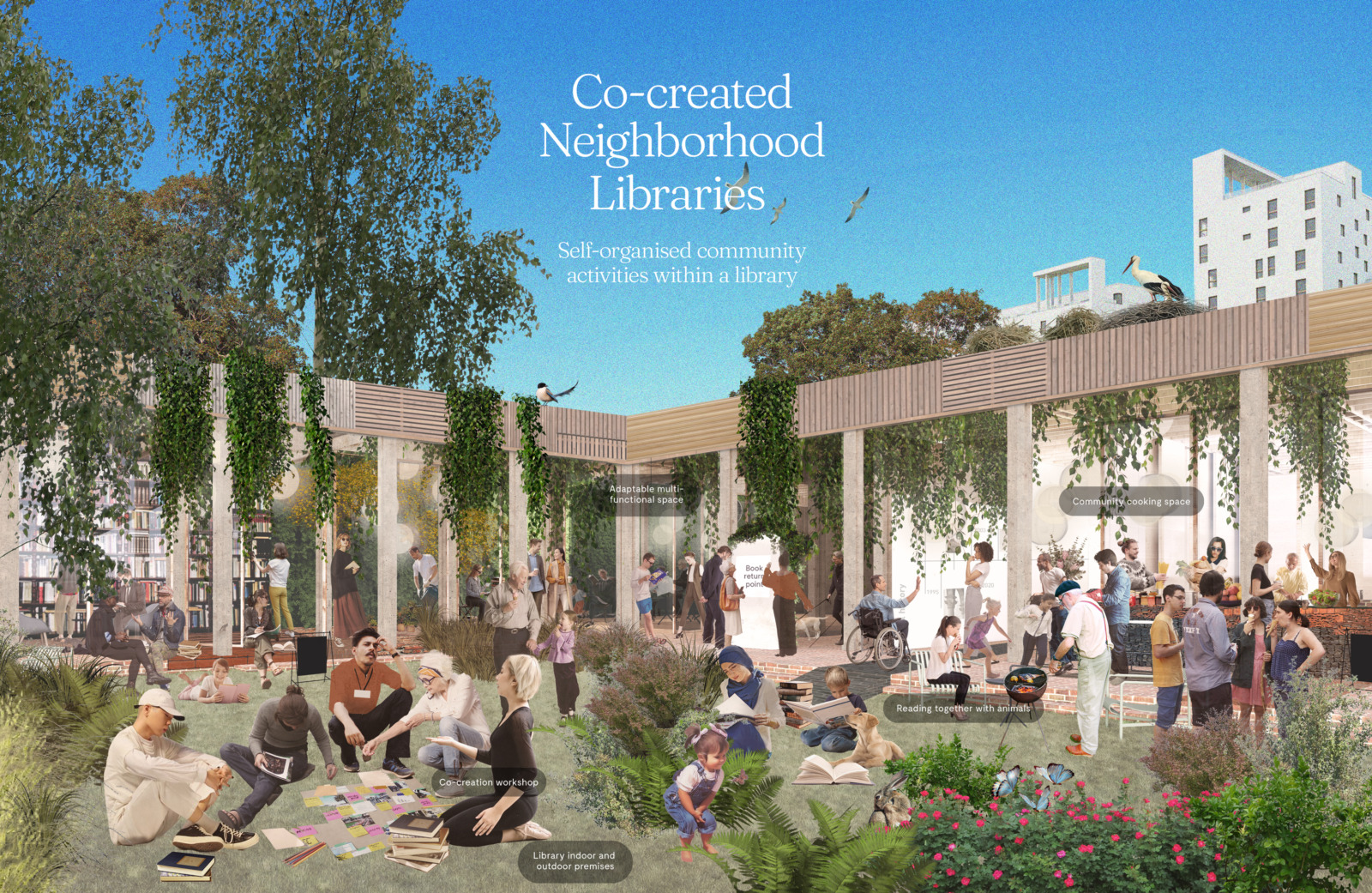Infrastructuring model for co-creating neighborhood libraries in Espoo, Finland

What would a library look and feel like if it was created together with your neighbors? The library could be a place where you engage in meaningful activities with your community. Through the process of creating the library, you can participate in the circular economy, heal the surrounding natural environment and learn sustainability in practice. Everyone is encouraged to join the library, which is constantly evolving and coordinated by your neighbors. Expert guidance and funding are provided.

Co-created Neighborhood Libraries (CNL) is a model for infrastructuring participatory design grounded in the regenerative circular economy. We propose a model for how sustainability transitions could be realized at a local level while promoting social resilience. Democratic participation in sustainability transitions is crucial for just transformations. Neighbors are enabled by trained co-designers or local facilitators to define, design, build, maintain and adapt neighborhood libraries in an ongoing process according to evolving needs. Following, aesthetic qualities are co-created and defined by the diverse inputs from residents through circular principles and ecoregional renewable resources. Co-created libraries provide space and conditions to share knowledge and facilitate meaningful neighborhood encounters. Our model contributes to community well-being by addressing basic human needs like belonging, creating and learning.
Our model broadens the scope of libraries, from perceived book-lending facilities to include neighborhood knowledge hubs for local regeneration. The function of libraries expands from more general knowledge providers to distributed and open-ended knowledge mediators unique to the creativity of neighborhood residents. The insights and empowerment from participatory design processes could gradually evolve to regenerate the library surroundings and native biodiversity. In our visualizations, surrounding areas are developed to promote universal access and space for other species as well.
Our model for infrastructuring neighborhood libraries can be applied and adapted to various local contexts.
The proposal was initially part of a school project at Aalto University in collaboration with Espoo City Library; together with designer André Arman Helgestad we have since evolved the model further.